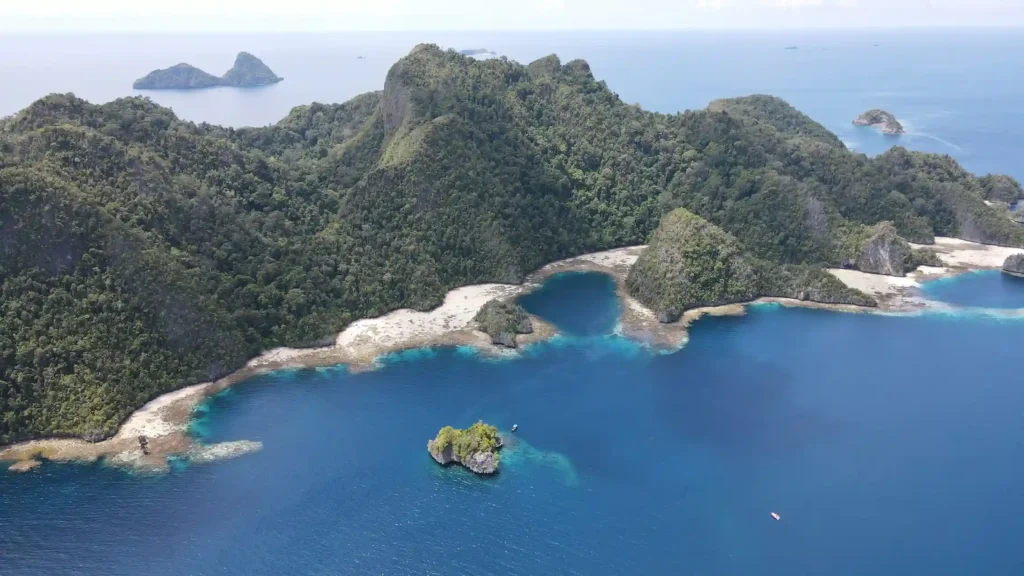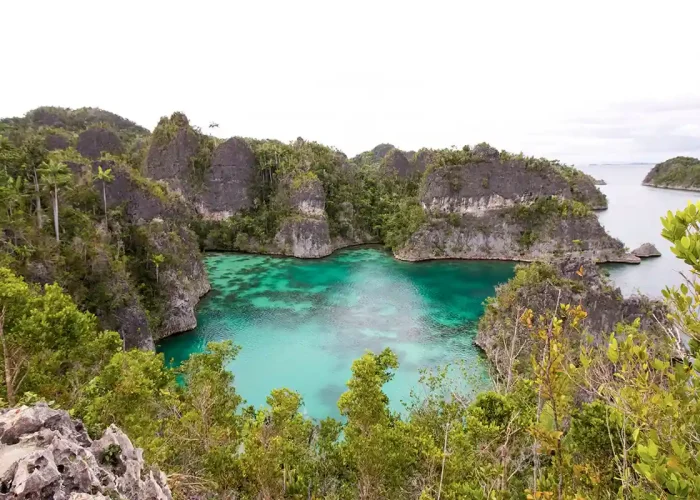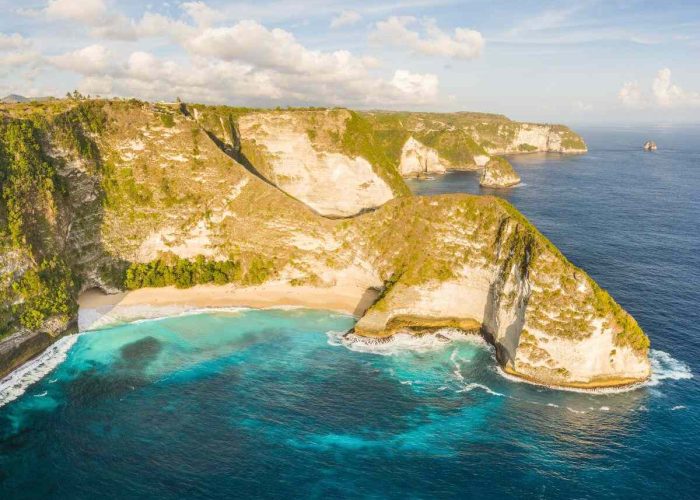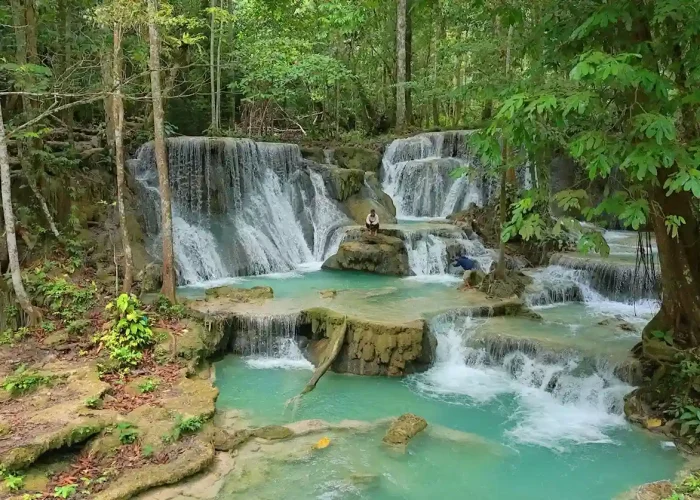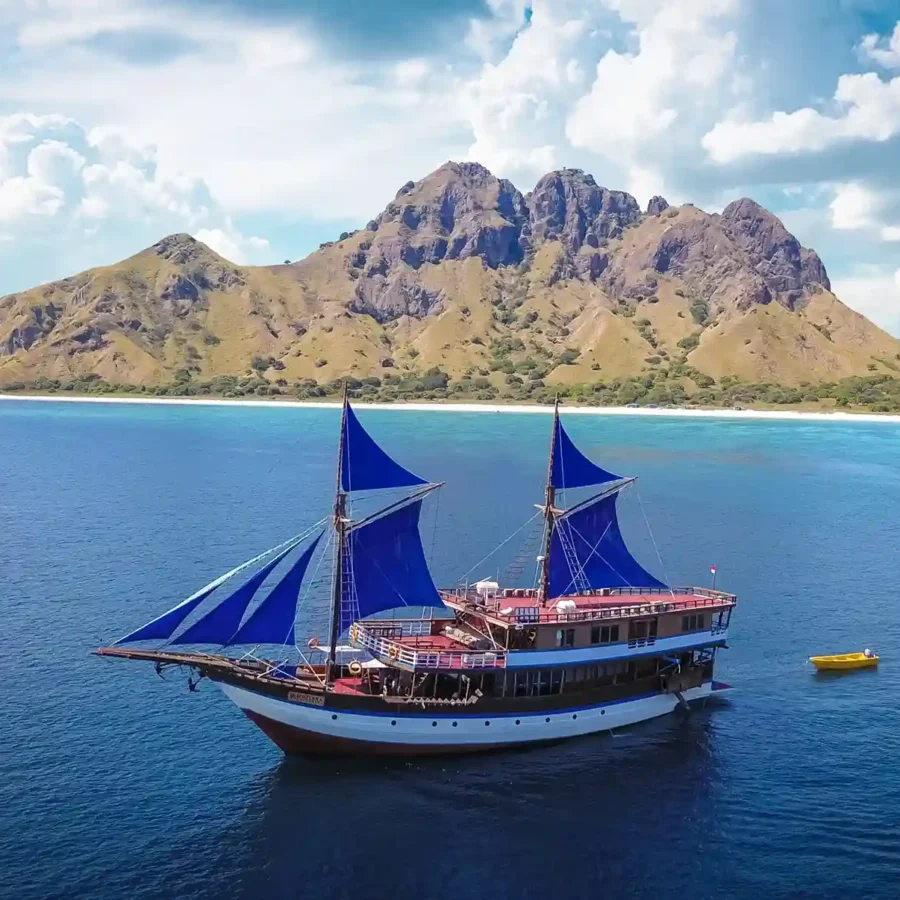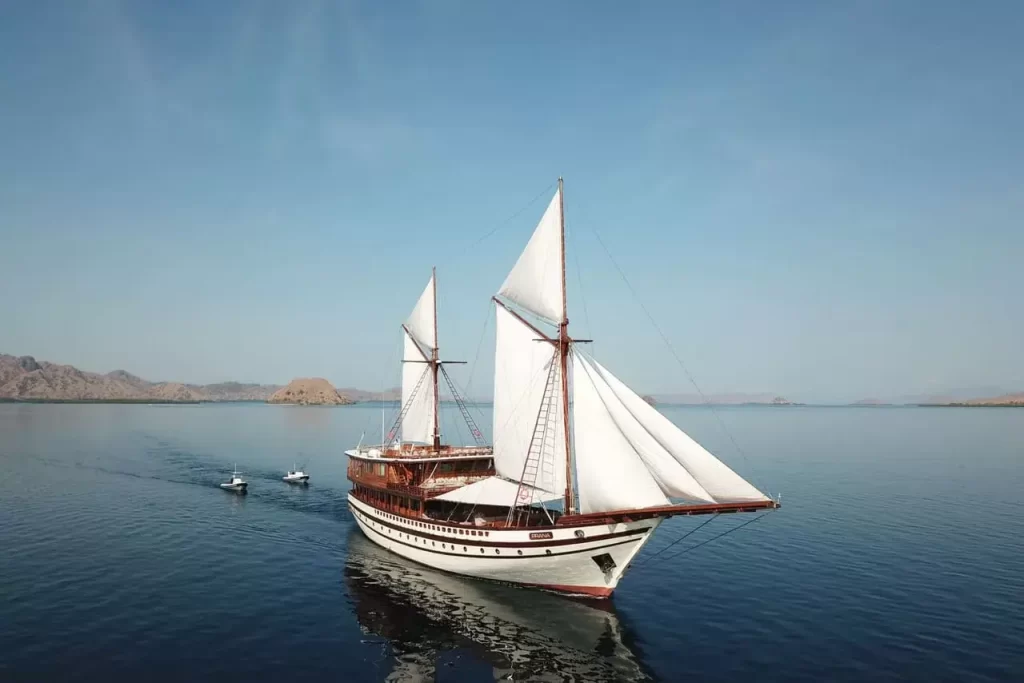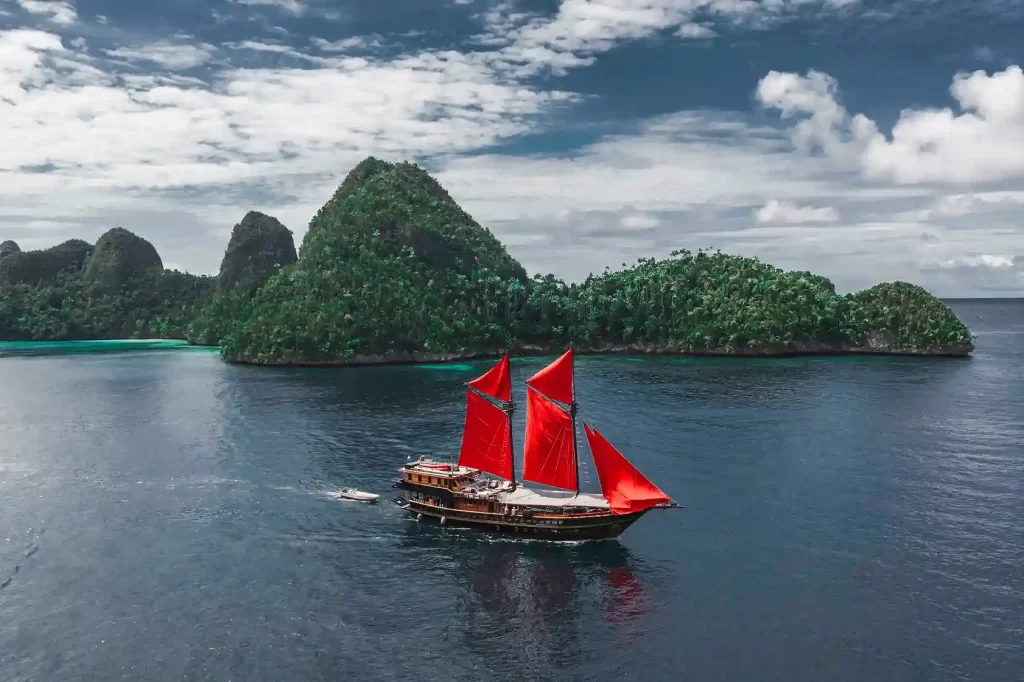Have you ever wondered where the name Raja Ampat comes from and why this region has become so famous worldwide? Many people visit to enjoy its stunning seas and islands, but few know that behind all of this lies a long and fascinating history of Raja Ampat waiting to be explored.
In this article, you will be taken on a journey through the timeline of Raja Ampat, from local legends and the influence of sultanates and traders to historical sites you can still visit today. Additionally, there are important tips to make your trip to Raja Ampat smoother and more memorable.
Table of Contents
Why You Should Know the History of Raja Ampat
You might ask, why is it so important to understand the history of Raja Ampat before visiting? Simply put, by knowing its history, you don’t just enjoy the natural scenery and the ocean, but you also truly experience the culture and traditions of the local communities. For example, when visiting traditional villages or historical sites, you’ll understand the meaning behind every ritual, building, and place name.
Moreover, understanding the history helps you see how the locals have preserved traditional wisdom, adapted to external influences, and maintained their identity. This way, your trip isn’t just about taking photos or snorkeling, but also about learning firsthand from local life and traditions that are still preserved today.
By learning the history of Raja Ampat, your journey becomes more meaningful as you connect past stories with real experiences on each island while enjoying the natural beauty surrounding you.
The History of Raja Ampat
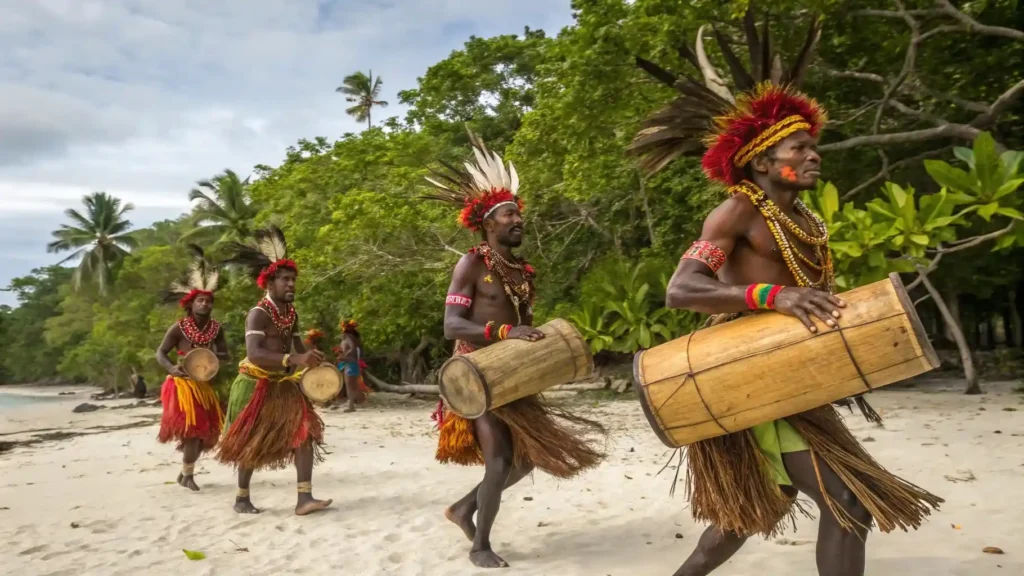
The history of Raja Ampat is long and layered, spanning from local legends to the influence of kingdoms and foreign traders. Broadly, it can be divided into several interesting parts to explore.
The Origin of Raja Ampat: The Legend of Seven Eggs
Behind the name Raja Ampat lies a legend passed down for generations about seven magical eggs. Allegedly, four of these eggs hatched into princes who became rulers of the main islands: Waigeo, Salawati, Batanta, and Misool, while the remaining three are believed to be the ancestors of smaller tribes scattered across the surrounding islands.
This legend does more than tell a story; it explains the division of territories and the structure of local leadership. Each king had responsibilities ranging from maintaining peace to managing marine and forest resources. Locals also believe the eggs brought blessings and spiritual power, connecting them deeply to nature and their ancestors.
Understanding the Legend of Seven Eggs lets you see how the people of Raja Ampat combine history, leadership, and culture in one narrative. It makes your trip more than sightseeing, it becomes an experience of living stories on each island.
Influence of the Tidore Sultanate in Raja Ampat
Besides legends, the history of Raja Ampat is shaped by political and trade relations with the Tidore Sultanate. This influence lasted around 400 years, during which the Sultanate appointed local governors, or “raja,” to rule the main islands: Waigeo, Salawati, Batanta, and Misool. The goal was not only political but also to secure strategic spice trade routes in eastern Indonesia.
Local communities interacted with the Sultanate through tax systems, alliances, and trade. Interestingly, despite external influences, they retained their traditions and customs, such as ancestral rituals, local leadership systems, and ways of life in harmony with nature.
Through centuries of Tidore influence, Raja Ampat became more connected with regional trade routes, yet locals preserved their cultural identity, showing a balance between adapting to outside influence and maintaining strong traditions.
Trade and Colonial Influence in Raja Ampat
From the 16th century onward, Raja Ampat was not only known for its seas but also became a critical point in eastern Indonesia’s trade network. Traders from Maluku, Ternate, and even Europe arrived to exchange spices, fish, and local crafts. Their presence introduced new technologies, including shipbuilding, and new trade strategies.
The Dutch noticed Raja Ampat as part of their colonial interests. They monitored trade routes, stationed patrol ships, and established small posts in strategic locations. Their goal was not to govern the islands directly but to ensure spice and marine trade continued smoothly according to VOC interests.
Despite colonial influence, the local population adapted without losing cultural identity. The kings or local governors continued to lead the main islands, preserving customs, rituals, and social systems. This interaction reflects a unique balance between external adaptation and local tradition preservation, making the history of Raja Ampat rich and layered.
Read more: Raja Ampat Season: Complete Guide for the Best Trip Experience
Historical Tourism Destinations in Raja Ampat

If you want a vacation that’s both fun and educational, Raja Ampat offers several spots that are not only beautiful but also rich in history:
- Arborek Traditional Village
A fishing village that still preserves local traditions, from dances to leadership systems. Perfect for observing communities living in harmony with nature. - Sauwandarek Traditional Village
Known for traditional handicrafts like weaving and basketry, it’s a place to understand historical interactions with the Tidore Sultanate and traders from Maluku. - Misool Island
Home to archaeological sites and rock paintings that show evidence of ancient human life before kingdoms and colonial times. - Dutch Fort in Salawati
Remnants of colonial oversight showing how trade routes and local social structures developed while customs remained intact. - Waigeo and Ancient Kingdom Sites
Display former local kingdoms, royal residences, and ceremonial locations, illustrating how leadership and tradition evolved across the islands.
Visiting these spots lets you experience both natural beauty and the rich history and culture of Raja Ampat.
Tips for Visiting Raja Ampat
To make your experience in Raja Ampat not only fun but also safe and comfortable, here are some tips to keep in mind:
- Plan Your Trip in Advance
Flights to Sorong are usually fully booked during high season, so make sure to book your tickets and accommodations early. This way, your trip will be smoother and less rushed. - Join a Trip with an Experienced Tour Operator
By joining a tour package with an operator who knows the routes, destinations, and local history, you can focus on enjoying your trip without any hassle. Experienced operators also usually provide guides who can share stories about the history of Raja Ampat. - Bring Your Own Snorkeling/Diving Gear
Raja Ampat is famous for its clear waters, so having your own equipment is more practical and hygienic. - Respect Local Customs and Traditions
Some villages have specific rules regarding clothing, photography, and social interactions. By respecting these, you can learn about local culture firsthand. - Maintain Cleanliness and Preserve Nature
Raja Ampat is still very pristine, so make sure to take your trash with you and avoid damaging the coral reefs. By doing so, you contribute to protecting the natural and cultural heritage of the islands for future generations.
Read more: Raja Ampat Tour Recommendations 2026: Packages, Prices, Itineraries & Tips
Explore the Beauty and Historical Heritage of Raja Ampat with IndonesiaJuara Trip
After exploring the many facets of Raja Ampat’s history, from the Legend of Seven Eggs, Tidore Sultanate influence, to interactions with traders and colonials, you can see how these islands shaped local communities, customs, and culture. All these historical remnants are not just stories but living parts of Raja Ampat that you can experience firsthand.
For a more comfortable, safe, and enriching experience, joining a trip with an experienced tour operator like IndonesiaJuara Trip is the way to go. By booking a Raja Ampat Tour, you won’t have to worry about transport, accommodation, or itinerary planning. Everything is designed so you can focus on enjoying the natural beauty while understanding local history and culture firsthand. With local guides ready to explain unique stories behind each island and historical site, your trip becomes more than just taking photos, it’s about truly understanding the history that shaped Raja Ampat.


